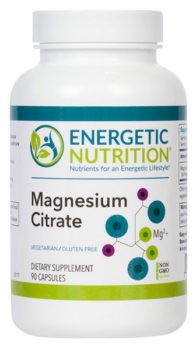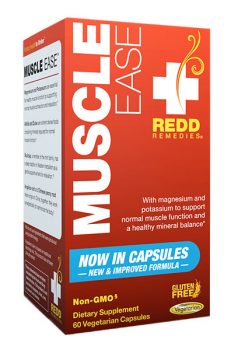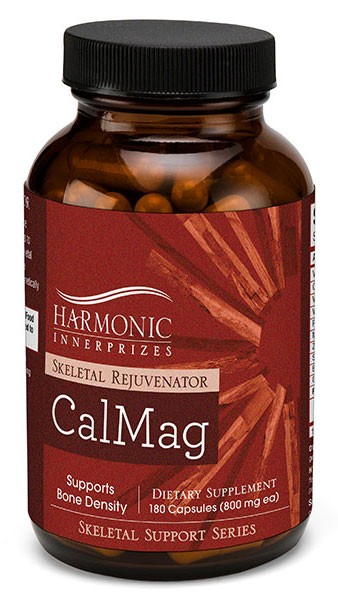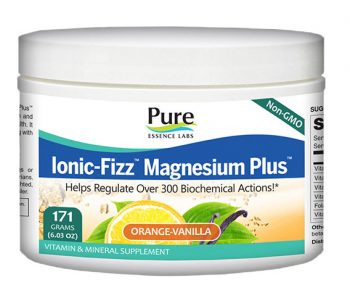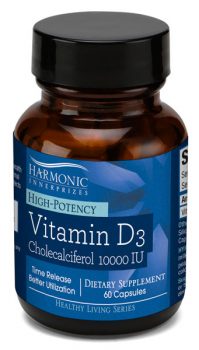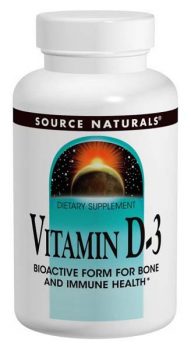Magnesium – A Trace Mineral with Boundless Benefits
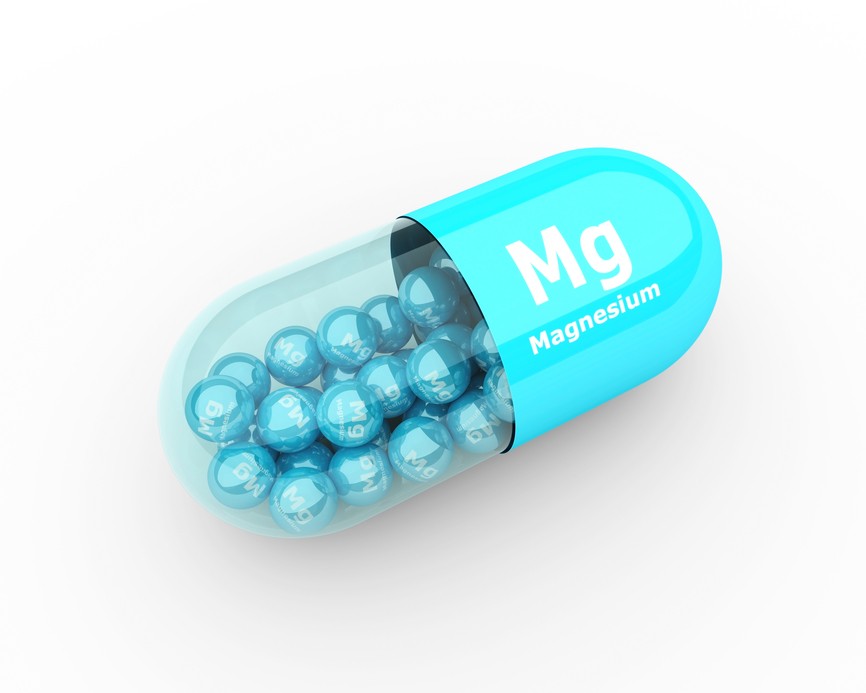
Plus 21 Signs You Could be Magnesium Deficient
In an ideal world, we would get the necessary trace minerals, such as magnesium, that we needed from our diets. After all, it’s one of the benefits of eating a variety of fruit, vegetables and grains. In addition to fiber and vitamins, our primary source of trace minerals come from consuming food grown in the ground, where trace minerals are supposed to be found in the soil. But we don’t live in an ideal world. Older farming practices, such as crop rotation, that used to allow the ground to be replenished with nutrients during a time of resting, are no longer common practice. Mass production has superseded the priority of maximizing nutrients. Even adding some nutrients back in the form of fertilizers isn’t enough.
Couple that with the typical American lifestyle of eating on the go, and most of us probably know we aren’t consuming enough whole foods to provide our bodies with the ample nutrients they need to thrive. One of the more important nutrients is magnesium. Though a trace mineral with relatively small amounts required for the average person, magnesium bound with complementary components needed for proper absorption, is vital to thousands of human body processes.
How Magnesium Benefits the Body
In fact, recent research has identified 3,751 magnesium binding sites on human proteins (www.greenmedinfo.com)! Additionally, magnesium is found in over 300 enzymes. These enzymes are required for numerous functions that could potentially make or break the health of every body system.
“The presence or absence of adequate levels of [magnesium] may epigenetically alter the expression and behavior of the proteins in our body, thereby altering the course of both health and disease.” (www.greenmedinfo.com)

Some of the major body functions affected by magnesium include:
- Energy – proper levels of magnesium are needed to create energy molecules, therefore needed to obtain and maintain normal energy levels
- Bones and Teeth – in the proper balance with calcium and Vitamin D, magnesium plays an integral part in preventing bone-related diseases such as osteoporosis
- Relaxation – magnesium supports blood vessel relaxation, affecting everything from the emotional ability to relax to reducing muscle tension and spasms
- Cardiovascular Health – possibly one of the most crucial functions of magnesium is within the heart. Found in higher amounts than any other place in the body, magnesium in the left ventricle of the heart helps to regulate blood pressure
- Gastrointestinal Function – magnesium supports digestive function by relaxing intestinal muscles, neutralizing stomach acid, and helping stool move through the intestines
- Nervous System Support – another way magnesium helps relaxation is by calming nerves and relaxing the blood vessels that can trigger tension, anxiety, and even trouble sleeping
- Reducing Headaches – working with hormones that play a part in reducing pain, magnesium supports the release of these hormones in addition to relaxing the blood vessels and lowering blood pressure
Signs of Magnesium Deficiency

Realizing how essential magnesium is to so many body processes and functions, it becomes even more alarming to know that experts estimate that 80% of American are magnesium deficient. It may lead to wondering why health practitioners and diet experts don’t emphasize the need for magnesium over other minerals, such as calcium or Vitamin D. After all, obtaining proper amounts of all three of these nutrients in a bioavailable form could set the precept for one’s journal toward either health or illness.
Given the large number of individuals likely low in magnesium to one extent or another, it may not be necessary to list the signs of magnesium deficiency. However, since it’s difficult to measure actual amounts of magnesium deficiency, having this list may help you to determine if you need to treat a deficiency and how much magnesium you may need after discussing your symptoms with a licensed health care provider.
Even a basic understanding of the many roles magnesium plays in the body as listed above, makes it easy to understand how a deficiency can result in any combination of the below signs.
Early Signs of Magnesium Deficiency May Include:
- Loss of appetite
- Headache
- Nausea and vomiting
- Fatigue and weakness
- Anxiety
Ongoing signs, or Chronic Evidence of Major Magnesium Deficiency May Include:
- Numbness and tingling
- Muscle contraction and cramps (muscle weakness)
- Seizures
- Personality changes (Behavior disorders or mood swings)
- Abnormal heart rhythms or Coronary spasms
- Hypertension and cardiovascular disease
- Kidney and liver damage
- Peroxynitrate damage (leads to migraines, MS, glaucoma, Alzheimer’s)
- Nutrient deficiencies in Vitamin K, B1, calcium, and potassium
- Restless Leg Syndrome
- Worsening PMS
- Insomnia
- Osteoporosis
- Recurrent bacterial and fungal infection
- Tooth cavities
- Impotence
Health Conditions or Situations that Require Sufficient Magnesium Intake (or lead to Magnesium Deficiency)
To make matters worse, certain health conditions, habits, or lifestyles can either decrease the body’s ability to absorb magnesium or cause the body to deplete magnesium more rapidly. In either circumstance, a magnesium deficiency can occur.
Some of the more common of these situations include:
- Unhealthy digestive system (Celiac, IBS, Crohn’s, leaky gut)
- Chronic diseases and related medication intake can deplete magnesium reserves
- Unhealthy kidneys
- Alcoholism
- Age (absorption ability decreases with age)
- Diabetes
- High stress lifestyle
- Others who cannot get adequate magnesium from their food supply
Sources of Magnesium
Food
Ideally the best source of magnesium is a variety of food that contains magnesium. Due to the proper balance of other nutrients in the whole-food state, absorption and utilization are a natural result. Unfortunately, due to modern-day farming practices and depleted soils, the levels of magnesium and other trace nutrients may not be as prevalent as they were a generation ago.
Top 10 Foods Containing Magnesium
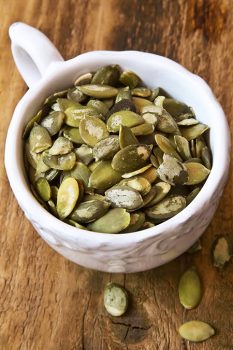
- Squash and Pumpkin Seeds (325 mg in ½ cup)
- Beans and Lentils (148mg in 1 cup cooked)
- Dark Chocolate (95mg per 29g square)
- Whole Grain Brown Rice (86mg in 1 cup cooked)
- Mackerel (Fish) (82mg per 3 oz)
- Avocado (58mg in 1 whole avocado)
- Dried Figs (51mg in ½ cup)
- Plain Non-Fat Yogurt (47mg in 1 cup)
- Bananas (32mg per 1 medium)
- Dark Leafy Greens (24mg in 1 cup Raw, 157 mg in 1 cup Cooked)
At first glance, it may seem easy to obtain enough magnesium from one’s diet. Just snack on pumpkin seeds through the day and you’re good to go! For some people, that may be completely feasible. And though it’s good to have them on hand, most of us probably wouldn’t be diligent enough to eat a full half a cup a day for the rest or our lives. Even then, the actual amount of magnesium you’d get would vary depending on the source.
The chart below reflects the recommended daily allowance (RDA) of magnesium for various age groups.
| 0-6 months | 30 mg |
| 7-12 months | 75 mg |
| 1-3 years | 80 mg |
| 4-8 years | 130 mg |
| 9-13 years | 240 mg |
| 14-18 years | 410 men 360 women |
| 19-30 years | 400 men 310 women |
| 31 and up | 420 men 320 women |
| Pregnant Women | 350-360 mg |
| Breastfeeding Women | 310-320 mg |
 Keep in mind that RDA levels were developed decades ago to reduce the number of nutrient-deficient diseases that had become so prevalent after the great depression. In other words, these are minimum recommendations to prevent major disease and do not account for the dozens of factors in present day society that can deplete magnesium and other nutrients as well as reduce their availability through diet alone.
Keep in mind that RDA levels were developed decades ago to reduce the number of nutrient-deficient diseases that had become so prevalent after the great depression. In other words, these are minimum recommendations to prevent major disease and do not account for the dozens of factors in present day society that can deplete magnesium and other nutrients as well as reduce their availability through diet alone.However, to grasp the general idea of how much actual food you’d need to eat (and assuming that food actually contains the levels of magnesium reported by the USDA), let’s look at what a 31-year old woman would need to consume on a daily basis.
 Rounding based on amount per serving, each bullet point represents total RDA
Rounding based on amount per serving, each bullet point represents total RDA- ½ cup pumpkin seeds
- 2 ¼ cups cooked beans or lentils
- 4 squares of dark chocolate
- 3 cups cooked brown rice
- 9 ounces cooked mackerel
- 5 whole avocados
- OR 2 cups cooked spinach
Another glance at the numerous functions of magnesium and it’s easy to see these numbers are likely not enough to achieve or maintain maximum health and wellness through a lifetime. When diet alone isn’t enough scientific and formulation advancements have made getting adequate magnesium through supplements more available and closer to nature than ever before.
Supplements
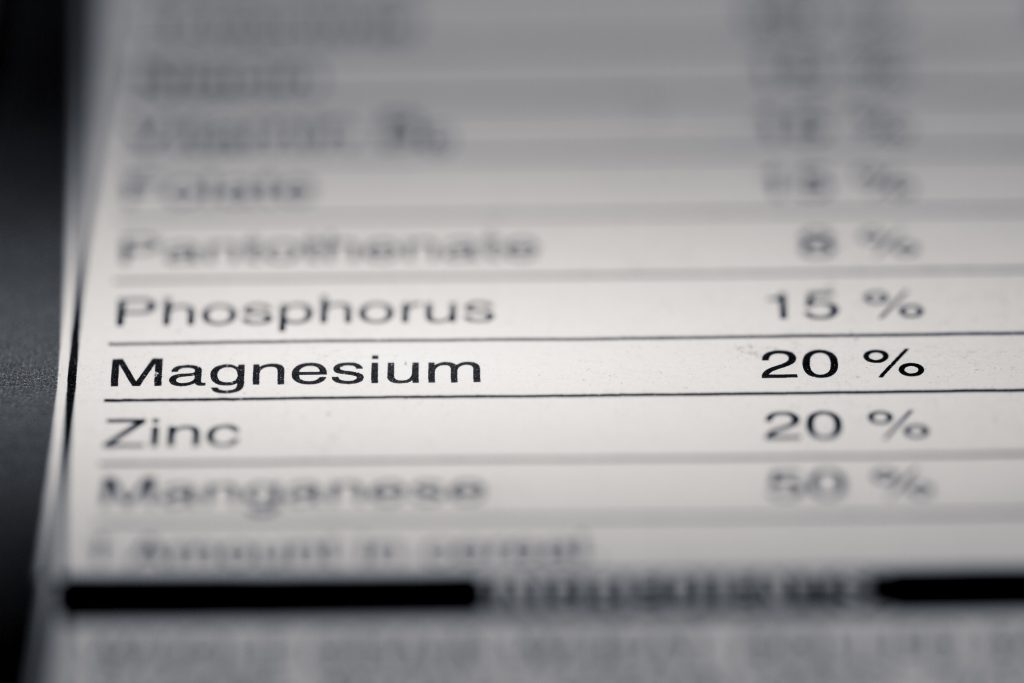
To be absorbed, magnesium needs to be bound to another substance. Considering the array of symptoms associated with magnesium deficiency, and the estimated 80% of Americans that are likely deficient, most health practitioners recommend supplementing with magnesium in addition to consuming as many magnesium-rich foods as possible.
Testing for magnesium levels in the body is also difficult since magnesium is mostly stored in the bones and tissues, and not in the blood.
Different variations of magnesium provide slightly different and targeted health benefits. To find out which one is right for you, discuss your options with your health care provider.
- Magnesium Glycinate (chelated and use by those wanting to correct a known deficiency)
- Magnesium Chloride/lactate (contains only 12% magnesium but is absorbed better than some supplements with higher magnesium concentrations)
- Magnesium Carbonate (most commonly used as an antacid, but offers the full-spectrum of magnesium benefits with 45% magnesium content)
- Magnesium Citrate (coupled with Citric Acid, this form of Magnesium is often used for conditions related to nerve function, muscle function, and those with difficulty absorbing magnesium from other sources)
- Magnesium Oxide (non-chelated most often used as a stool softener, bound to an organic acid or a fatty acid for proper absorption)
- Magnesium Sulfate (milk of magnesia – used as a laxative and easy to overdose)
- Magnesium Malate (compounded with malic acid – shown in clinical studies to soothe muscles and support energy production)
- Magnesium Taurate (combined with taurine amino acid and used for its calming effects on mind and body)
- Magnesium Threonate (newer type not readily available but preliminary research indicates this form may penetrate the mitochondrial membrane)
Take with the proper ratio of calcium, K2, and D3 to ensure the body has proper amounts representative of the balance found in consuming whole foods. Exact ratios are unknown, but general rule is a 1:1 ratio of magnesium and calcium (at recommended levels depending on age – see chart above) plus 1,000 IU Vitamin D and 100 micrograms of K2.
Magnesium Supplements and Combination Formulas
Magnesium
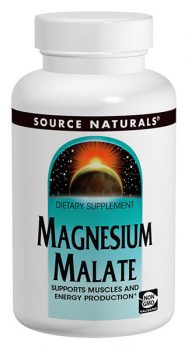
Magnesium Malate
Magnesium Malate supports enzymes key to ATP syntheses and energy production. 425 mg of magnesium malate per six capsules.
Magnesium Citrate
Magnesium Citrate from Energetic Nutrition contains 140 mg per capsule. Vegetarian, gluten-free and non-GMO.
Combination Formulas
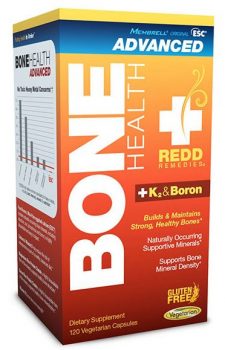
Bone Health Advanced
Bone Health Advance with K2 and Boron contains eggshell calcium (Membrell® Original ESC®) and 300mg of magnesium rice protein chelate.
Muscle Ease
Muscle Ease formula contains magnesium, potassium, and a special blend of herb and plant extracts for supporting muscle health*
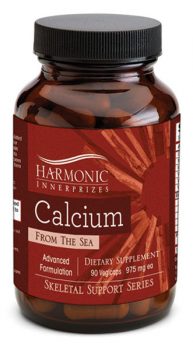
Calcium from the Sea
Calcium from the Sea advanced formulation contains calcium plus a 1000mg combination of magnesium oxide, citrate, malate, and ascorbate. It also has Vitamin D3, Vitamin C, and Vitamin K2 plus an enzyme complex and superfood proprietary blend.
Cal/Mag Skeletal Rejuvenator
Cal/Mag Skeletal Rejuvenator is formulated for those that desire a superior calcium formula to meet their specific structural needs. Provides your calcium and magnesium as well as the other very important co-factors.
Ionic-Fizz Magnesium Plus
Ionic-Fizz Magnesium Plus contains 300 mg magnesium carbonate plus other essential vitamins and nutrients.*
Complementary Supplements
Vitamin D3
Vitamin D3 in 5000 or 10,000 IU high potency and time release cholecalciferol that is micro-encapsulated for greater stability and a long shelf life.
Source Naturals Vitamin D-3
Source Naturals Vitamin D-3 in bioactive form containing 1,000 IU per two tablets. Free of gluten, dairy, soy, and yeast.
References
Magnesium’s Importance Far Greater Than Previously Imagined
Marvelous Magnesium and its Role in the Body
4 most Common Nutrient Deficiencies on the Paleo Diet
Magnesium Supplements (Dr Axe)

